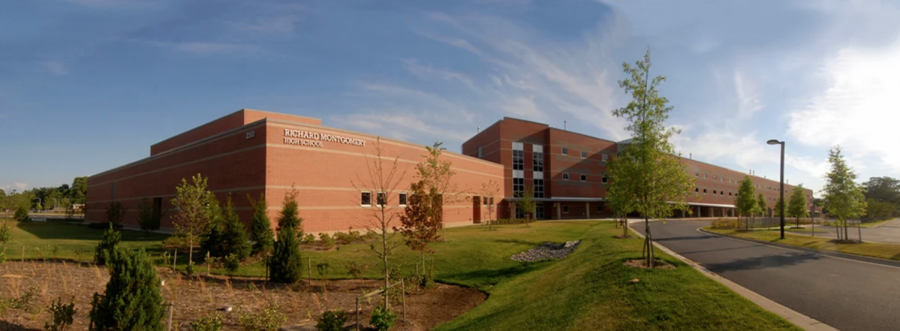Break the pipeline: RM SMOBs do not represent the entire county
Photo from Montgomery County Public Schools
RM students have dominated SMOB elections for too long, there must be a change.
April 14, 2021
Over the past five years, six out of ten Student Member of the Board (SMOB) finalists have been from Richard Montgomery. Next week, Montgomery County students will elect either Hana O’Looney or Henry Kaye, guaranteeing a third SMOB from RM. This pattern has continued for years now, despite there being over twenty public high schools in Montgomery County, each with hundreds of students eligible to become the SMOB.
However, this issue goes beyond just RM as in each election, there has been at least one finalist with a history of leadership positions in the Montgomery County Regional Student Government Association (MCR). One may wonder why experience is considered negative, however, the issue lies in the obstacles some students in parts of the county face when it comes to getting involved.
According to 2019 SMOB finalist Zoe Tishaev, “advertising and membership to MCR and MCJC is insulated, you have to know the right people to get into the advocacy sphere and that is hard to do for many people. There is little communication between MCR and the SGAs, it’s like a broken game of telephone.” Without the ability for students from all middle and high schools to get involved in countywide advocacy, it feels pointless to even try if each year there is already an expected winner.
With candidates coming from the same school every year, SMOBs fail to accurately represent MCPS’s diverse student body. While candidates may try to rectify this disconnect via numerous visits to almost all schools in the county, a few hours of interaction does not convey the specific problems lower-income students must endure every day. These areas, such as the down county consortium, have received little to no representation from past SMOBs. And, the many promises SMOBs have made to these schools during their candidacy fall through or are forgotten upon election.
Both O’Looney and Kaye perpetuate this trend of underrepresenting other parts of the county. Due to their experiences in what is considered a more elite school that benefits from the International Baccalaureate Magnet Program, they have not experienced the same types of educational hardships students at Watkins Mill High School, for example, have. Being restricted to choose between two students from the same school equates to choosing the same candidate either way. Though O’Looney and Kaye may differ on certain policy areas, one can liken the situation to choosing one side of the same coin.
Another major issue with the SMOB election process is that many students do not have the first clue of the Board of Education’s actual functions. Each year, the candidate who makes the flashier promises end up getting the votes, but when their promises do not become reality, students lose faith in the office of the SMOB. Students cannot be expected to make decisions on who represents them within the Board of Education when they do not know its purpose.
The main purpose of SMOB itself is to vote on the behalf of students on policies. The SMOB has equal voting rights to all of the adult members of the Board, with some exceptions. Current SMOB Senior Nick Asante said, “[the Board of Education]’s job is more oversight, not specific meticulous plans […] For instance, if there’s an issue with curriculum…It wouldn’t necessarily be our job as board members to decide how this initiative is going to run per se, we just give guidelines to the superintendent and he passes it down to the right department to get that to happen.”
Although completely dismantling the RM-to-SMOB or MCR-to-SMOB pipeline is impossible to do overnight, making Richard Montgomery a regional IB and increasing access to MCR involvement are ways to get more student involvement. If Richard Montgomery becomes a regional IB, like Springbrook High School, it breaks down some of the barriers and the idea that Richard Montgomery students are more worthy than students from other high schools. This happens when we stop busing in students from across the county under the pretense that they are the best of the best students in the county.
Tishaev said, “a lot of students involved in MCR are from Richard Montgomery, and Richard Montgomery being ‘the countywide IB’ feeds into an idea that Richard Montgomery students are ‘the best of the best’ which does nothing but contribute to a culture of competition and demotivation of students from other schools.”
Another way to break the pipeline is implementing a civic engagement curriculum, which would teach students not only about what the Board of Education and Montgomery County Council are, but what they do, why they are important and why you should join. This must become a county-wide initiative as advocacy differs from school to school which is why there are so many students coming from RM due to the student advocacy rich culture that other schools simply do not have.
The pipeline creates a massive disconnect between the SMOB and the students they are meant to fight for. Montgomery County remains divided and inconsistent, with zip code determining the quality of education for many. If MCPS aims to become one of the most inclusive and progressive counties in the country, as many would like it to be, it has to take strides to support and uplift each and every student’s voice, and that starts with making the SMOB reflective of everyone, not just RM.


